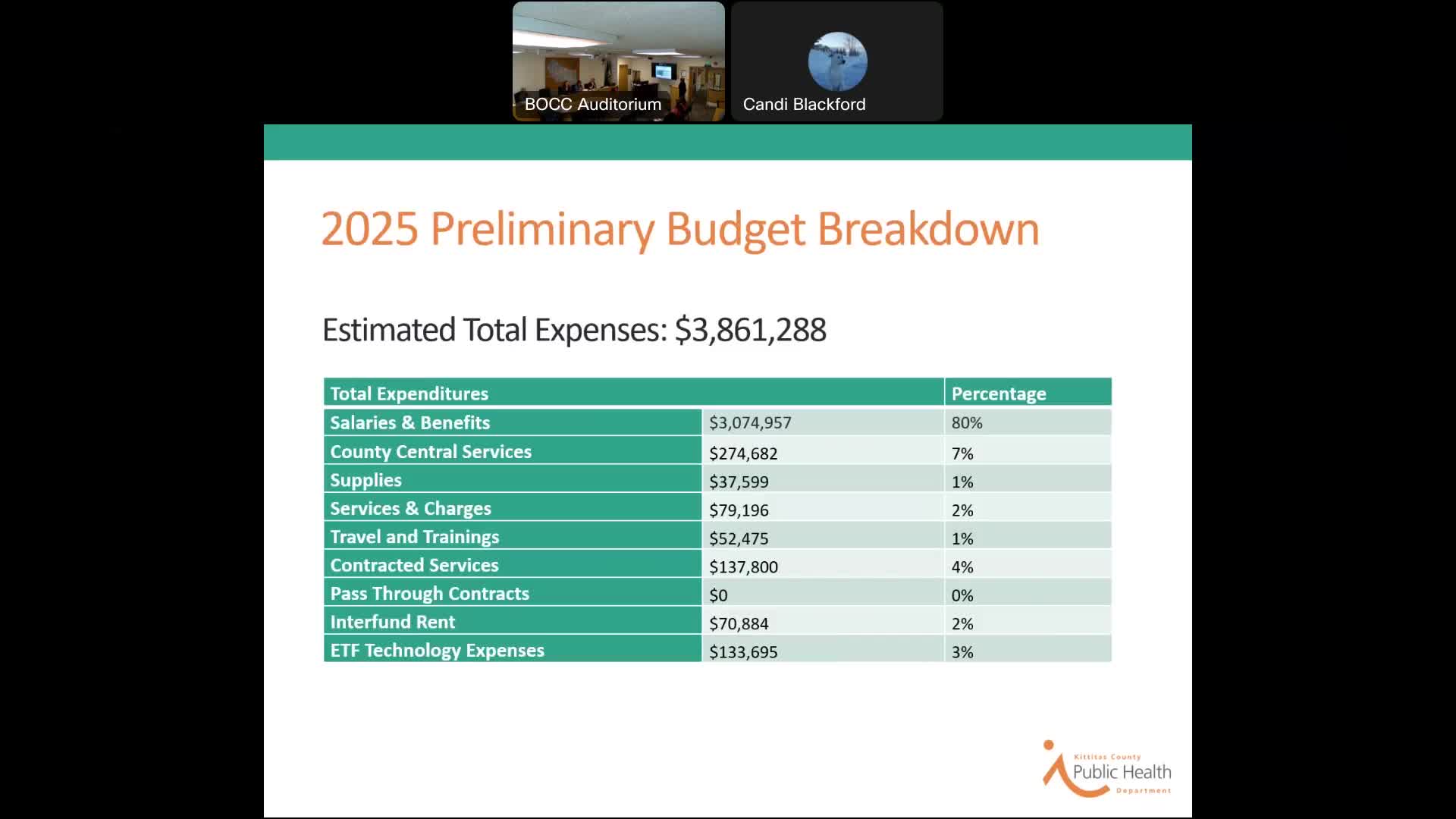Budget Proposal Reveals Major Changes in Public Health Funding
September 19, 2024 | Kittitas County, Washington
This article was created by AI summarizing key points discussed. AI makes mistakes, so for full details and context, please refer to the video of the full meeting. Please report any errors so we can fix them. Report an error »

In a recent government meeting, officials outlined the budgetary framework for 2025, highlighting significant changes in funding allocations and staffing updates. The anticipated total expenses for the upcoming year are primarily driven by salaries and benefits, which are projected to account for 80% of the budget, consistent with historical trends. Notably, the budget will not include any pass-through contracts related to COVID-19, reflecting a decrease in available funding as pandemic-specific resources diminish.
The meeting emphasized the strategic use of the county's admissions tax, with a focus on supporting mandated activities in communicable disease control. This includes funding for case investigations and clinic services, particularly childhood vaccinations, aimed at alleviating pressure on local healthcare providers. Additionally, the budget allocates resources for harm reduction programs, including naloxone distribution and syringe services.
A healthy fund balance was reported, with allocations earmarked for capital equipment replacement, tuberculosis (TB) management, and isolation and quarantine activities—lessons learned from the COVID-19 pandemic. Officials expressed a desire to increase the TB fund, citing the high costs associated with managing TB cases.
Staffing updates were also a key topic, with proposals to enhance the environmental health team. The introduction of an Environmental Health Specialist 3 position aims to provide leadership and expertise within the division, while a new Environmental Health Coordinator position is intended to capitalize on grant opportunities to expand services beyond fee-based activities.
The meeting concluded with a discussion on the human services budget, which has been separated from public health funding to ensure compliance with categorical funding requirements. The estimated budget for human services is projected at approximately $5.3 million, bringing the total departmental oversight to over $9 million. Funding sources include taxes, fees, and grants, with a commitment to directing 90% of expenditures back into community services.
Overall, the meeting underscored a proactive approach to budgeting and resource allocation, with a clear focus on community health and safety initiatives in the face of evolving funding landscapes.
The meeting emphasized the strategic use of the county's admissions tax, with a focus on supporting mandated activities in communicable disease control. This includes funding for case investigations and clinic services, particularly childhood vaccinations, aimed at alleviating pressure on local healthcare providers. Additionally, the budget allocates resources for harm reduction programs, including naloxone distribution and syringe services.
A healthy fund balance was reported, with allocations earmarked for capital equipment replacement, tuberculosis (TB) management, and isolation and quarantine activities—lessons learned from the COVID-19 pandemic. Officials expressed a desire to increase the TB fund, citing the high costs associated with managing TB cases.
Staffing updates were also a key topic, with proposals to enhance the environmental health team. The introduction of an Environmental Health Specialist 3 position aims to provide leadership and expertise within the division, while a new Environmental Health Coordinator position is intended to capitalize on grant opportunities to expand services beyond fee-based activities.
The meeting concluded with a discussion on the human services budget, which has been separated from public health funding to ensure compliance with categorical funding requirements. The estimated budget for human services is projected at approximately $5.3 million, bringing the total departmental oversight to over $9 million. Funding sources include taxes, fees, and grants, with a commitment to directing 90% of expenditures back into community services.
Overall, the meeting underscored a proactive approach to budgeting and resource allocation, with a clear focus on community health and safety initiatives in the face of evolving funding landscapes.
View full meeting
This article is based on a recent meeting—watch the full video and explore the complete transcript for deeper insights into the discussion.
View full meeting
